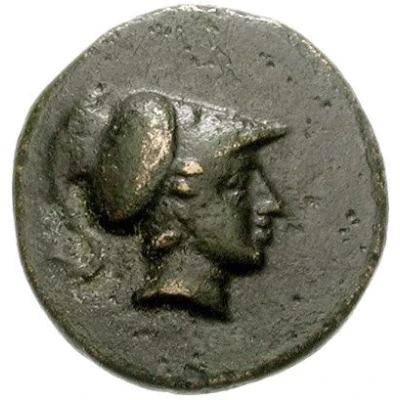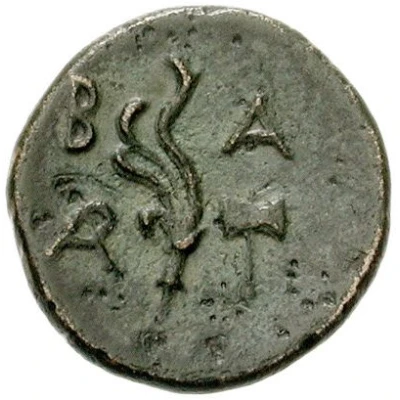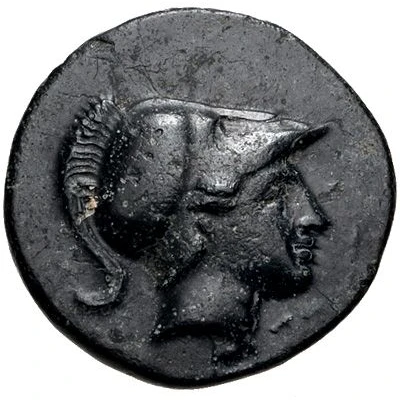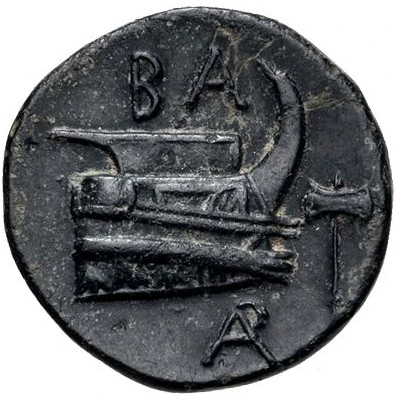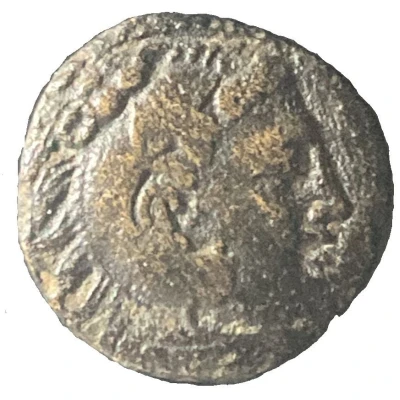
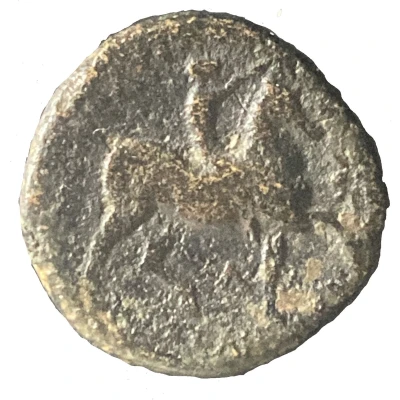

Æ20 - Kassander 305 BC - 297 BC
| Bronze | 6.4 g | 20 mm |
| Issuer | Kingdom of Macedonia |
|---|---|
| King | Cassender (305 BC - 297 BC) |
| Type | Standard circulation coin |
| Years | 305 BC - 297 BC |
| Currency | Drachm |
| Composition | Bronze |
| Weight | 6.4 g |
| Diameter | 20 mm |
| Thickness | 2 mm |
| Shape | Round (irregular) |
| Technique | Hammered |
| Orientation | Variable alignment ↺ |
| Demonetized | Yes |
| Updated | 2024-10-10 |
| Numista | N#350632 |
|---|---|
| Rarity index | 90% |
Reverse
Youth on horseback pacing right. Star in upper right field, Λ below.
Script: Greek
Lettering:
BAΣIΛEΩΣ KAΣΣANΔΡOY
Λ
Comment
This coin is also catalogued in Mionnet I, #790. Their weight is stated between 6.6 and 5.5 grams.
The picture above is a high grade sample from Münzen & Medaillen GmbH
">https://www.wildwinds.com/coins/greece/macedonia/kings/kassander/Mionnet_I_790.jpg
A contemporary of Alexander the Great, Cassander was one of the Diadochi who warred over Alexander's empire following the latter's death in 323 BC. Cassander later seized the crown by having Alexander's son and heir Alexander IV murdered.[2] In governing Macedonia from 317 BC until 297 BC, Cassander restored peace and prosperity to the kingdom, while founding or restoring numerous cities (including Thessalonica, Cassandreia, and Thebes).
The weight of Cassander and Alexander bronzes are very much alike. Also because numerous Cassanders are overstruck on Alexanders. So, a coin of 5-8 grams weight and 18-21 mm diameter is called a “unit”. A “half-unit” weighs 3-5 grams and has a diameter of 16-19 mm. And a “quarter-unit” weighs about 2 grams with a flan measuring 13-14 mm. There are some “double units” as well, weighing over 8 grams with a diameter of 20-23 mm. Cassander’s first bronze issue bears the unbearded head of Heracles wearing lion scalp on the obverse and a seated lion on the reverse. These coins were almost exclusively overstruck on Alexander the Great half-units bearing as types a diademed young male head and a gallopping horse. The inscription reads KASSANDROU without any indication of the royal title. From 305 on, Cassander follows the example of his rivals and assumes the royal title. From that moment on, he is referred to as “BASILEWS” Cassandros on every bronze he issued ever since. Cassander’s most common unit type has a horseman on the reverse. These coins are being struck until the end of Cassander’s reign and cover some fifty percent of the Cassander bronzes. The head of Heracles as an obverse is traditionally attributed to the mint of Pella. (Cited from: https://www.cointalk.com/threads/cassander-bronze-coin.323881/), however tihs coin is cited by Mionnet as being struck in Amphipolis.
Interesting fact
The Kassander coin is considered a rare and valuable artifact, with only a few known examples remaining in existence. It is believed that the coin was minted during Kassander's reign as king of Macedonia, which lasted from 305 BC to 297 BC. Despite its age, the coin remains in relatively good condition, with clear details and minimal wear and tear. Its rarity and historical significance make it a highly sought-after collector's item among numismatists and historians.
